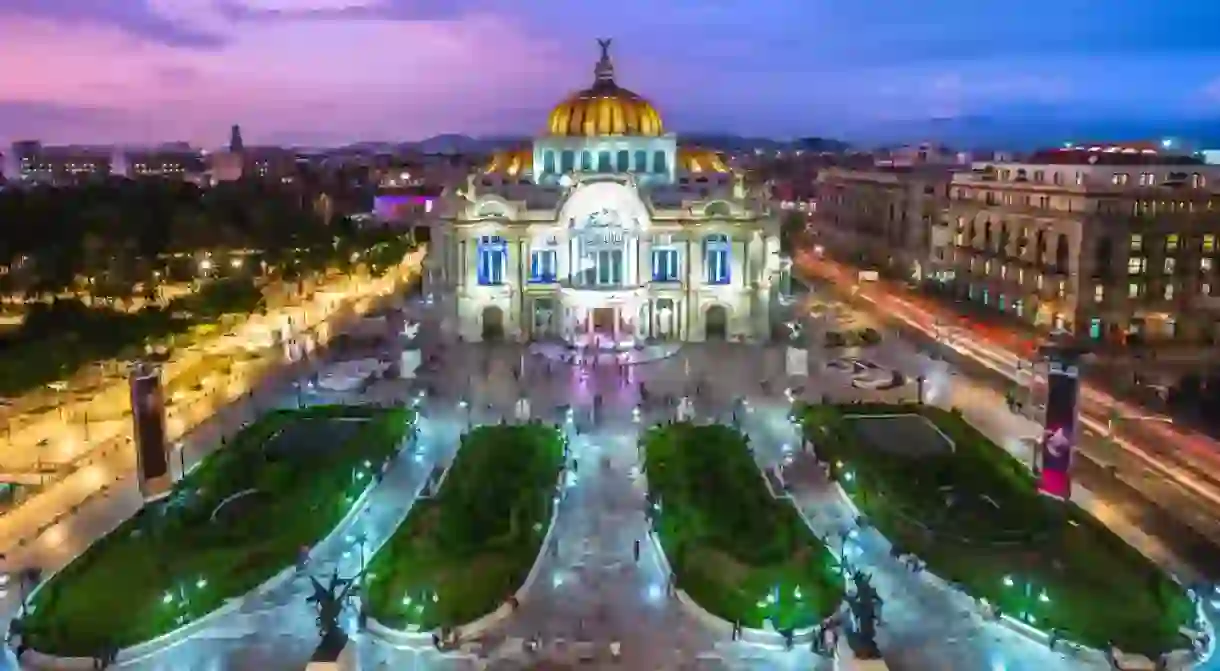Mexico City: 23 Things to Do for an Unbelievable Vacation

In recent years, Mexico’s capital has drawn the international spotlight, winning recognition for its world-class museums, culinary culture, and architecture. These are the best things to do in Mexico City.
Despite Mexico City’s air of refinement, it still retains an edge. This is a energetic, sprawling metropolis that refuses to be tamed. With that in mind, here are some of the top experiences for travelers in Mexico City – including sophisticated cultural destinations and sights that showcase the more eccentric aspects of its personality.
Take in the Zócalo
Archaeological site

Officially called La Plaza de la Constitución, Mexico City’s main square is better known as the Zócalo. This historic location was a ceremonial hub for the Mexica indigenous people who ruled the Aztec Empire. The destination still has an important role in official celebrations and protests. Covering an area of 620,000 square feet, this is one of the largest public squares in the Americas. From the Zócalo, you can admire the impressive sights of the Metropolitan Cathedral, the National Palace, and frequent displays of Aztec dancing and music.
Stroll the Paseo de la Reforma
Architectural Landmark
Explore the Templo Mayor and its museum
Museum, Ruins, Archaeological site

National Museum of Anthropology
Museum

Visit the Frida Kahlo Museum
Museum

Wander through Leon Trotsky’s house
Museum
The Leon Trotsky Museum is just a short walk from La Casa Azul. The exiled Russian revolutionary had originally lived with Kahlo and her husband Diego Rivera, but was expelled by Rivera after he had a romantic affair with Kahlo. The Russian stayed at 410, Río Churubusco, until a Stalinist agent attacked him with an ice pick in the study in August 1940. He died from his wounds the following day. Much like Kahlo’s house, the museum gives you an intimate look into its former owner’s history – the rooms are preserved as they were when Trotsky lived and a tomb in the garden contains his ashes.
Wander through the city’s artistic center
Building

Tour a creepy island
Historical Landmark

Pay for an electric shock
Archaeological site
Enjoy Chapultepec Forest
Park

Enjoy a soccer game at the Azteca Stadium
Stadium

Cheer on some masked wrestlers
Stadium
Sip a coffee at the city’s most literary cafe
Cafe, Coffee
Climb the Pyramids of Teotihuacan
Ruins, Historical Landmark

Sample the city’s specialty tacos
Food Kiosk, Mexican

Down a mug of pulque
Bar, Mexican
The bitter beverage, pulque, has made a huge comeback in recent years, thanks to a renewed interest in Mexico’s pre-Hispanic past. The drink itself has been produced in the country for more than 2,000 years and is made by fermenting – rather than distilling – the sap of the spiky agave plant. Many bars now offer pulque natural, which is a white, frothy drink with an acidic aftertaste. Newcomers to the beverage may prefer pulque curado, a flavoured version that won’t overwhelm an unfamiliar palate. Casa Conejo is a popular bar offering both varieties of the drink.
Palacio de Bellas Artes, Mexico City, Ciudad de México
Building
Basílica de Santa María de Guadalupe
Cathedral

Given its religious importance and architectural beauty, the sacred Basílica de Santa María de Guadalupe is a must-visit on any trip to Mexico City. Legend dictates that the Virgin de Guadalupe – who features on religious icons country-wide – appeared to Cuauhtlatoatzin in the 16th century on the cerro (hill)where the Basílica now stands. Celebrated on the 12 December, the status of the Virgin de Guadalupe is such that this is the third most visited religious destination in the world, only beaten by sites in Japan and India.
Ciudad Universitaria
University

Catedral Metropolitana
Cathedral
The Metropolitan Cathedral sits on the northern side of the Zócalo and is the largest cathedral in the Americas and oldest in Latin America. Built using stones taken from the ancient Aztec temple – the site of which it sits precariously atop – this cathedral is a masterpiece of three distinct architectural styles that mark the three centuries that it took to construct. With Xalapan-designed bell towers, the majority of the architecture is gothic and Spanish in inspiration.
Cineteca Nacional
Cinema, Movie Theater, Theater
Torre Latinoamericana
Building

Monumento a la Revolución
Architectural Landmark, Historical Landmark

Tours & Trips in Mexico
Natural Feature

Tired of Mondays and planning your next vacation? Check out these carefully curated guided tours, from Mexico City to epic adventures in Oaxaca and the Mayan secrets amongst the coastal treasures of the Yucatan peninsula, these trips cater to every palate.
This article is an updated version of a story originally created by Paula Zamorano Osorio.













